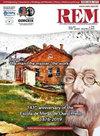Iso-velocity maps. A vibration control tool in quarries
Q3 Earth and Planetary Sciences
引用次数: 1
Abstract
Urban growth around mining areas has brought problems such as neighborhood's discomfort due to blasting vibrations, which can cause structural damage to the houses, dust and atmospheric overpressure. In Brazil, environmental restrictions are increasingly rigorous and seismic monitoring is required as an environmental control measure. This study aims to analyze a methodology for application of iso-velocity maps in quarries located in urban areas and evaluate options for building iso-velocity maps. This work was performed in a quarry located in the State of Sao Paulo and four blastings were monitored. All blastings had similar features and they were evaluated in the same bench. For each equation, directional, scaled-distance parameters were estimated and different iso-velocity maps were made and compared. It is concluded that geophone disposition must adjust to the monitoring purposes. Eight to fifteen aligned geophones are adequate for a scaled-distance curve. Sixty-four or more geophones, spatially and homogeneously distributed, can generate an iso-velocity map concerning a single blasting. High variability of rock mass features seems to prevent obtaining good results when the seismographs are not homogeneously distributed surrounding the blasting.Iso-velocity地图。采石场振动控制工具
矿区周边的城市发展带来了一些问题,比如爆破振动会造成房屋结构损坏、粉尘和大气超压,从而让居民感到不适。在巴西,环境限制越来越严格,地震监测是一项环境控制措施。本研究旨在分析在城市采石场应用等速度图的方法,并评估建立等速度图的选择。这项工作是在圣保罗州的一个采石场进行的,并监测了四次爆破。所有爆破具有相似的特征,并在同一台架上进行了评估。对于每个方程,估计方向和比例尺距离参数,并制作不同的等速图并进行比较。因此,检波器的配置必须与监测目的相适应。8到15个排列整齐的检波器对于按比例测量距离的曲线来说是足够的。64个或更多的检波器,在空间上均匀分布,可以生成一次爆破的等速图。当地震仪在爆破周围分布不均匀时,岩体特征的高度可变性似乎会妨碍获得良好的结果。
本文章由计算机程序翻译,如有差异,请以英文原文为准。
求助全文
约1分钟内获得全文
求助全文
来源期刊

Rem-Revista Escola De Minas
工程技术-工程:土木
自引率
0.00%
发文量
0
审稿时长
6-12 weeks
期刊介绍:
REM – International Engineering Journal (antigua REM – Revista Escola de Minas) es la primera revista técnica de Sudamérica. Fue fundada en enero de 1936 por los estudiantes de la Escuela de Minas de Ouro Preto y desde entonces se ha especializado en la publicación de artículos en las áreas de la Ingeniería Civil, Geología, Metalurgia y Materiales y, Minería y Mecánica y Energía.
Su objetivo es servir como un medio de publicación para los trabajos técnicos y científicos originales de investigadores nacionales y extranjeros en esas áreas. Contribuciones originales (artículos y cartas) son aceptadas. Artículos de revisión dependen de la invitación y/o análisis de los Editores.
El envío de artículos para su publicación implica que el trabajo no ha sido publicado previamente, que no está siendo presentado para su publicación en otra revista y no se publicará en otro lugar, en la misma forma, sin el permiso, por escrito, de los Editores/Autores.
 求助内容:
求助内容: 应助结果提醒方式:
应助结果提醒方式:


